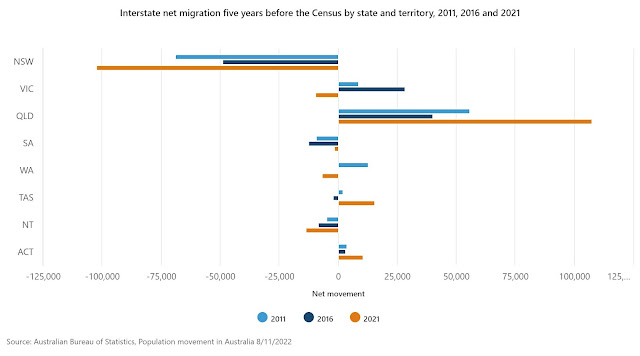 |
| Then Prime Minster Scott Morrison & Treasurer Josh Frydenberg - political mates and housemates before the Liberal-Nationals Coalition sank the ship of state. IMAGE: The Australian, 26 August 2020 |
On 5 July 2018 then Australian Treasurer & Liberal MP for Cook Scott Morrison unveiled his plan to overhaul the Goods & Services Tax (GST) state distribution scheme.
By 12 November 2018 the Australian Coalition Government now lead by Prime Minister Morrison introduced Treasury Laws Amendment (Making Sure Every State and Territory Gets Their Fair Share of GST) Bill 2018 which was duly passed by Parliament and became law on 29 November 2018.
On 25 February 2019 Treasurer John Frydenberg put his signature to this contentious document.
Thus a political and fiscal time bomb with a relatively long fuse was activated…...
The Age, 14 November 2022, p.3:
A deal put in place to placate Western Australia when its share of GST revenue was tumbling is on track to cost the nation's taxpayers 10 times more than forecast, helping drive up federal government debt and interest payments to record levels.
Originally pulled together by then-treasurer Scott Morrison in 2018 before being put through parliament by his successor, Josh Frydenberg, the deal that expected to cost $2.3 billion is now on track to cost more than $24 billion. [my yellow highlighting]
WA, which delivered four seats to Labor at the May election on the back of a 10.6 per cent swing, is vowing to fight to keep the arrangement, due to expire in 2026-27.
Morrison struck the deal at a time when WA's share of the tax pool had fallen to an all-time low of 30 cents for every dollar of GST raised within the state. Its iron ore royalties were effectively being redistributed among the other states and territories based on a Commonwealth Grants Commission formula that takes into account each state's revenue sources and expenses.
Under Morrison's deal, from 2022-23 WA must receive a minimum of 70 cents in the dollar before increasing to 75 cents in 2024-25. When the policy was put in place, it was expected iron ore prices would fall and WA's share of the GST pool would therefore rise. Instead, prices have soared.
The Morrison government ensured other states and territories wouldn't be worse off, which requires the top-up funding for the deal to come from outside the $82.5 billion GST pool.
It was originally forecast to cost federal taxpayers $2.3 billion over three years, including just $293 million in 2021-22, but the surge in iron ore prices has meant more top-ups and for longer.
The October budget revealed that last year, the deal cost $2.1 billion and is forecast to jump to $4.2 billion this financial year. By 2025-26, the cost of the entire deal is on track to reach $22.5 billion, with another $2-3 billion likely the year after that.
Throughout the entire period, the budget is expected to be in deficit, forcing the extra cash to be borrowed. In percentage terms, the blowout in cost is larger than the NDIS, aged care, health or defence.
Independent economist Chris Richardson said the deal had been ill-conceived from the beginning with the cost to be borne by future taxpayers.
He said all significant spending programs needed to be properly assessed, including the GST deal.
"Yes, the politics of it are difficult. But we have a whole host of other issues, like the NDIS, and the economics of them have to be dealt with," he said…….
The extra borrowing for the GST deal has contributed to the lift in gross debt, which on Friday reached a record $909.4 billion.
Treasurer Jim Chalmers said the cost of servicing the debt was getting more expensive and was the budget's fastest-growing expense. [my yellow highlighting]














